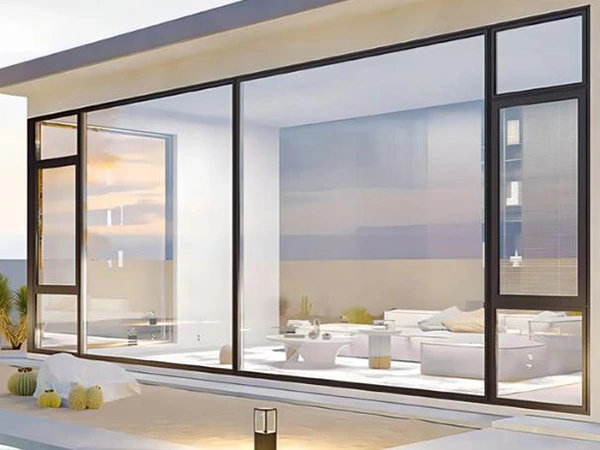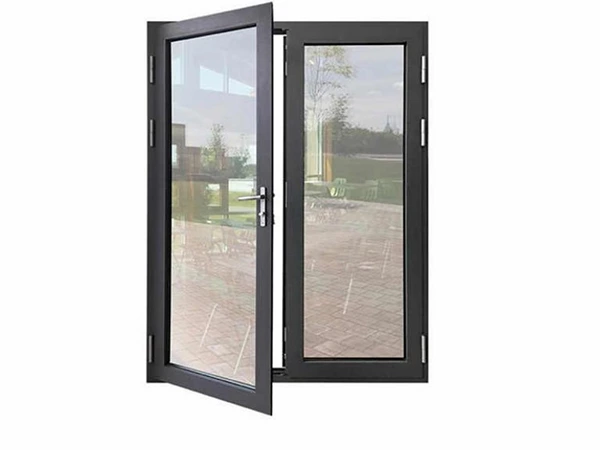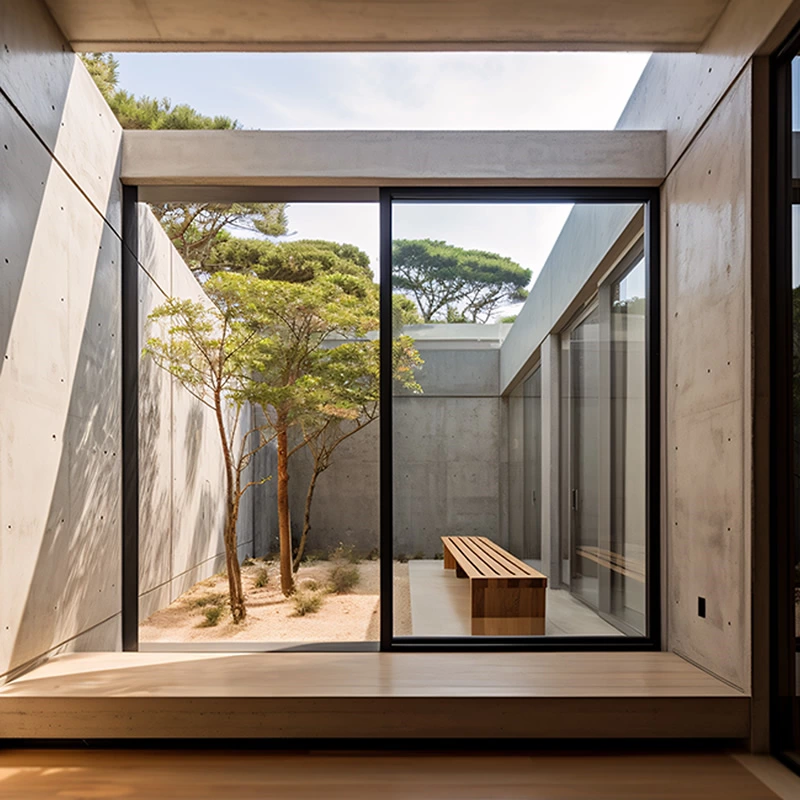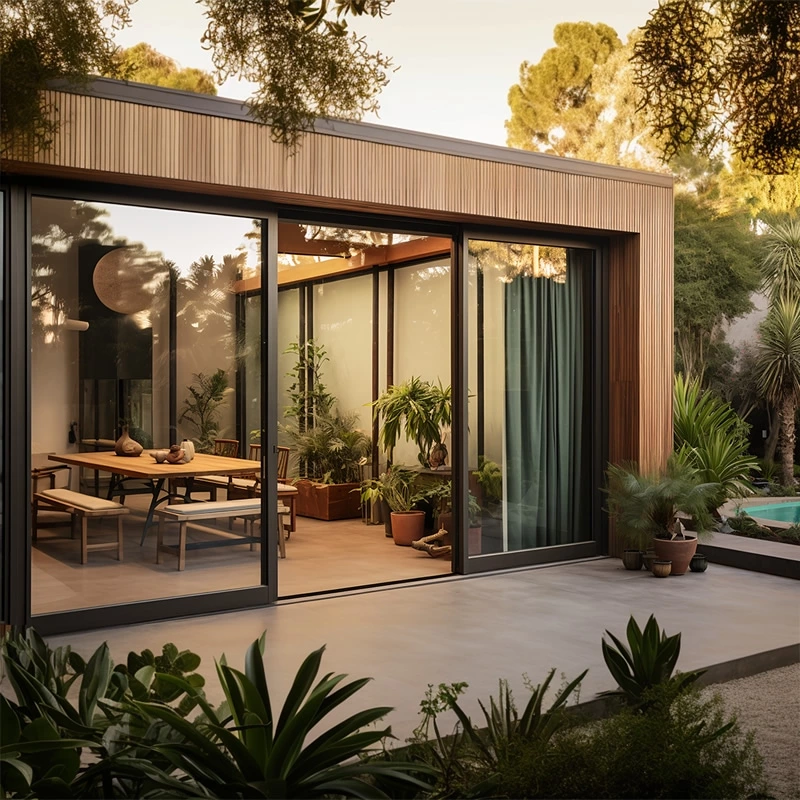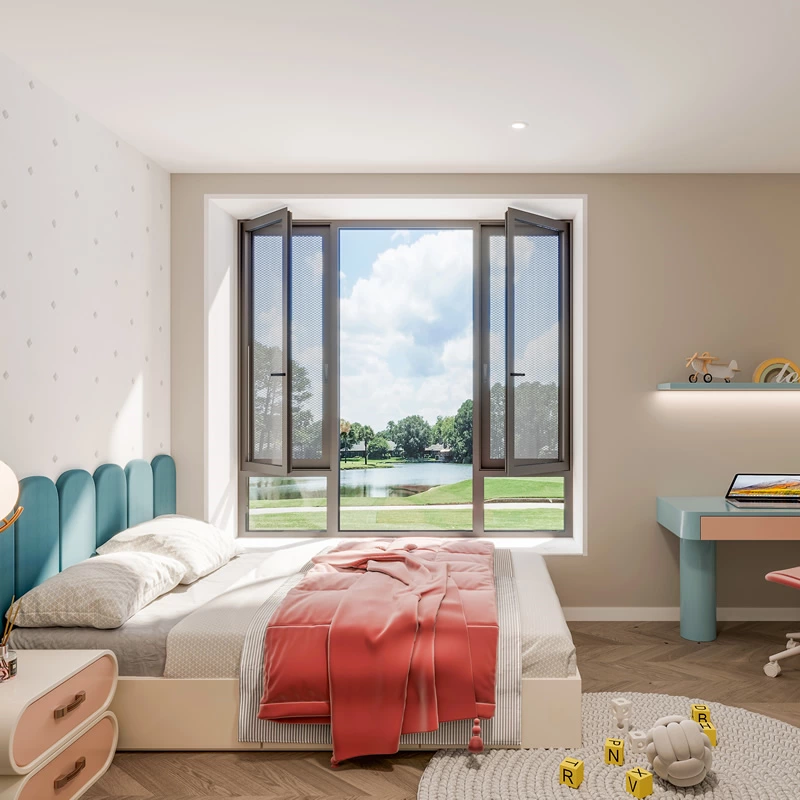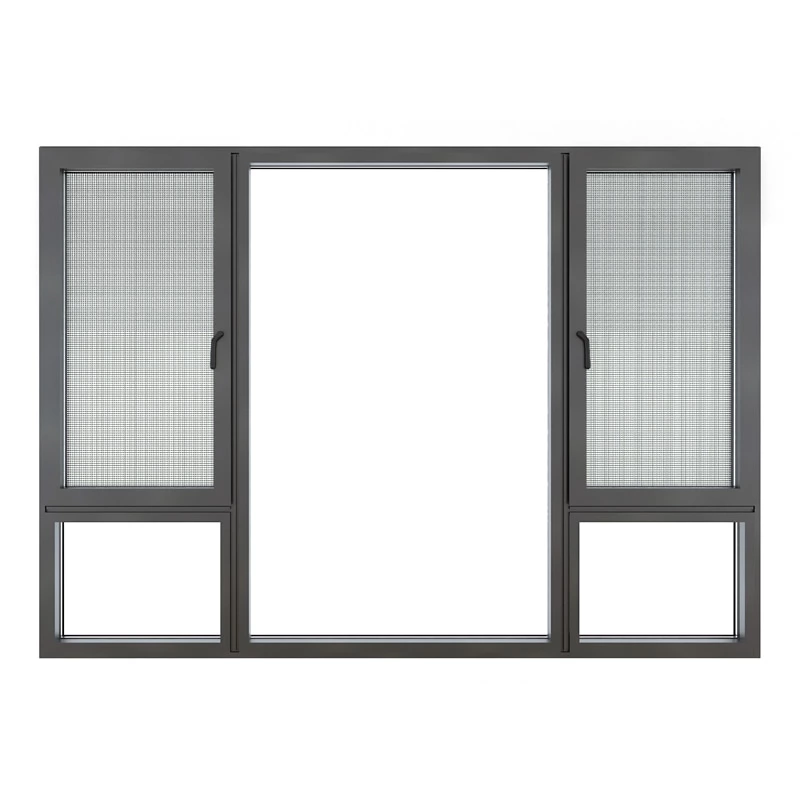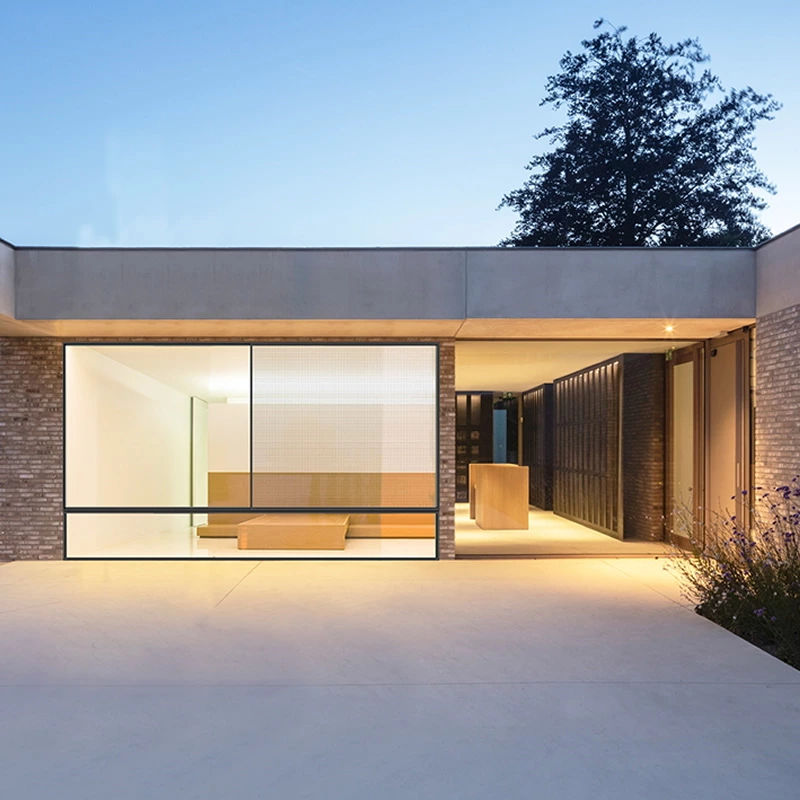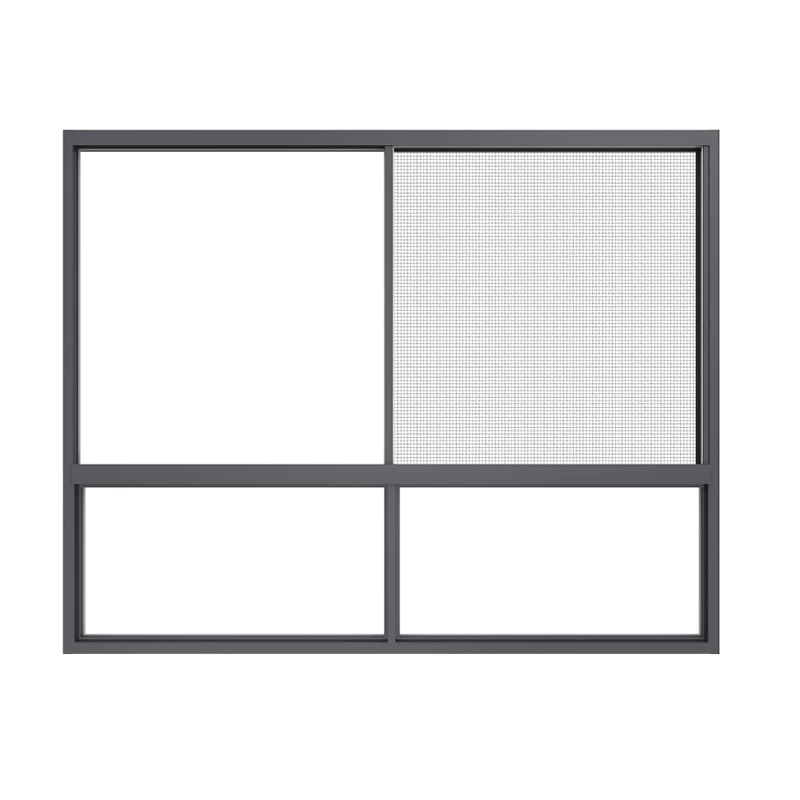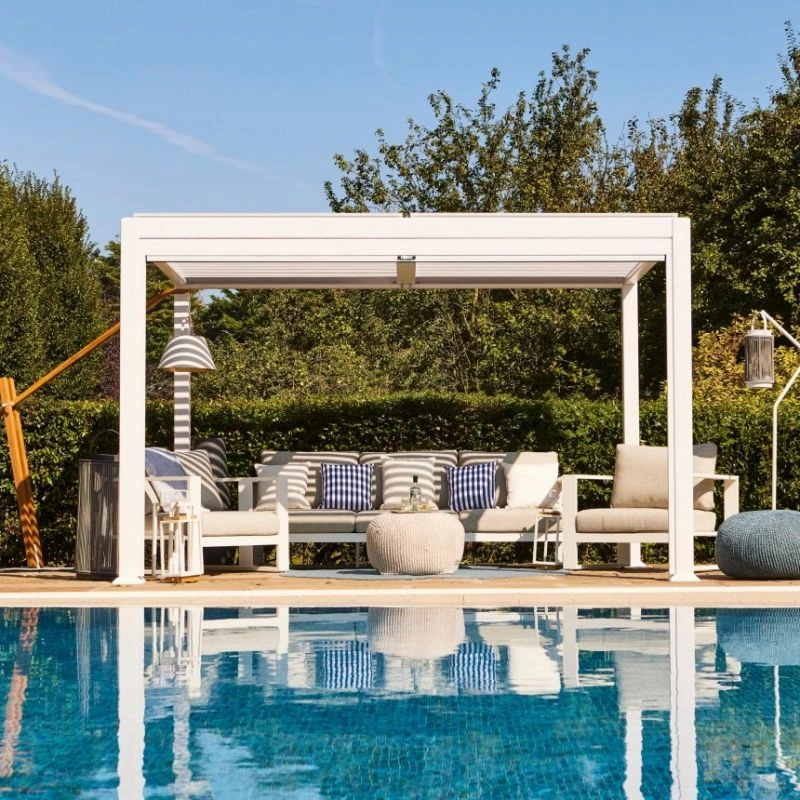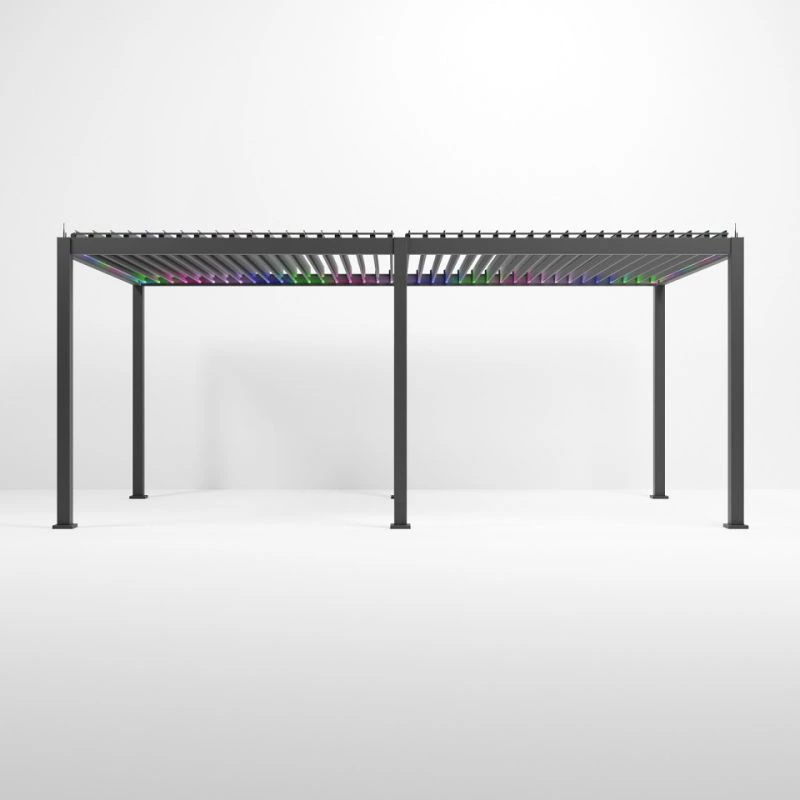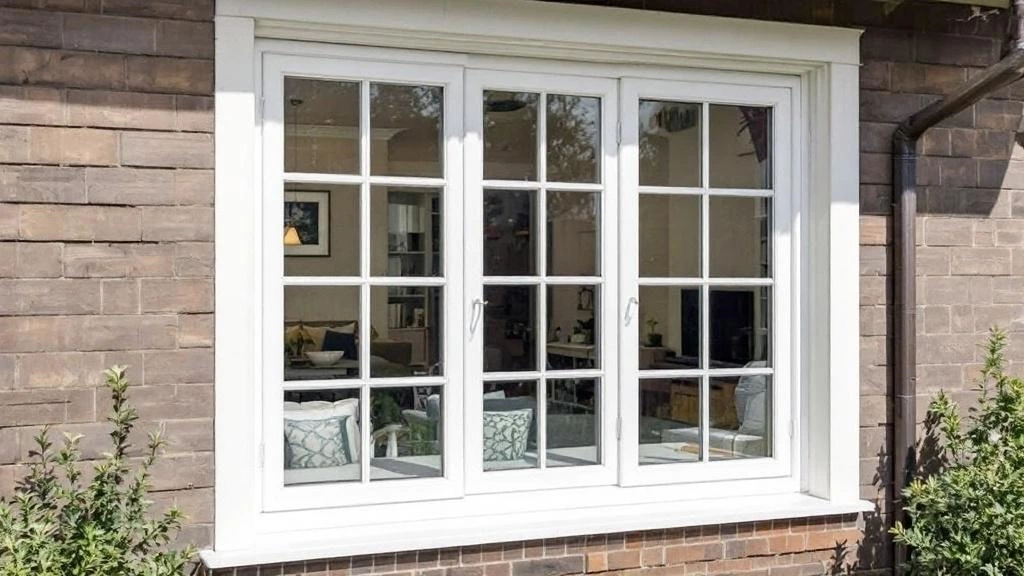
Aluminum casement windows have become popular in the global construction market in recent years due to their superior durability, modern appearance and good sealing. Whether it is a single-family villa, apartment residence or commercial office space, casement Windows can bring excellent ventilation, lighting and safety performance to the building.
This guide will help you understand the application scope, common types, performance comparison, climate adaptation and cost composition of aluminum casement Windows from a professional perspective, so that you can easily choose the most suitable window solution.
Aluminum casement windows have become popular in the global construction market in recent years due to their superior durability, modern appearance and good sealing. Whether it is a single-family villa, apartment residence or commercial office space, casement Windows can bring excellent ventilation, lighting and safety performance to the building.
This guide will help you understand the application scope, common types, performance comparison, climate adaptation and cost composition of aluminum casement Windows from a professional perspective, so that you can easily choose the most suitable window solution.
I. The scope of application of aluminum swing window: why is it so popular?
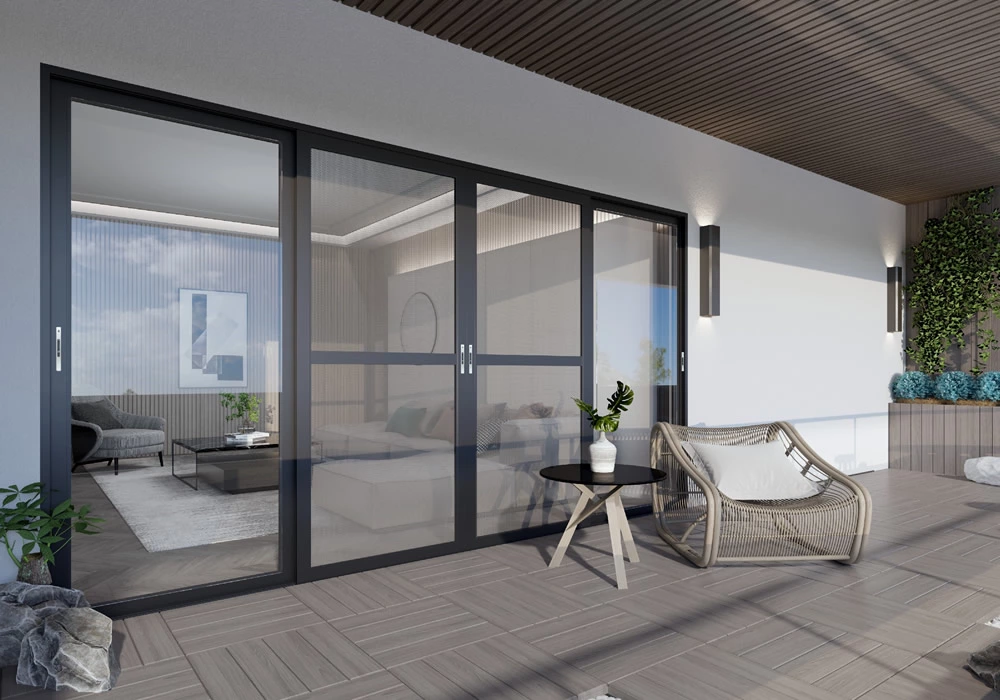
The versatility of aluminum casement windows makes them suitable for almost all types of building environments:
Residential project: suitable for bedrooms, living rooms, kitchens and other areas, providing good ventilation and natural light.
Commercial and office buildings: enhance the appearance of the building, support large area Windows, and cooperate with the curtain wall system for better results.
Renovation project: lightweight and easy to install, suitable for old house renovation, especially suitable for window frame renewal.
High altitude or high wind pressure areas: aluminum has high strength and excellent wind pressure resistance, especially suitable for coastal or windy areas.
In addition, aluminum casement windows are corrosion resistant and low maintenance cost, which is the ideal choice for users who pursue high cost performance and modern aesthetics.
2. Common types of aluminum casement Windows: The opening mode determines the use experience
Different opening methods will directly affect the practicality, safety and space utilization of the window. Here are the main types:
1. Internal opening
Disadvantages: it occupies indoor space when opened, so it is not suitable for compact areas.
Recommended use area: bedroom, above the second floor.
2. Open type
Advantages: save indoor space, better ventilation effect.
Disadvantages: relatively inconvenient maintenance, strong wind areas need to be equipped with windproof supports.
Recommended use areas: kitchen, ground floor Windows, public areas.
3. Suspended
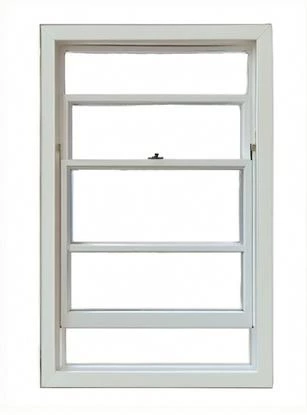
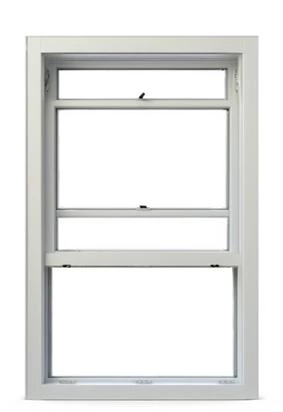
Advantages: good ventilation, strong rainproof, improve privacy.
Disadvantages: limited opening Angle, mainly used for small Windows.
Recommended use area: bathroom, basement, storage room.
4. Composite
Advantages: combined with the inner opening and flat opening function, ventilation and safety are taken into account.
Disadvantages: higher price, higher requirements for hardware.
Recommended use area: high-end residential, hotel, office building.
3. Comparison of types
| type | superiority | inferior strength or position | Recommended application scenarios |
| Internal opening | Easy to clean, good sealing | space usage | Bedroom, residential in cold areas |
| Open on the outside | Save space and good ventilation | Cleaning is difficult and needs to be strengthened under wind pressure | Kitchen, ground floor house, apartment corridor |
| top suspension | No ventilation, no rain, enhanced privacy | Only small Windows and limited ventilation | Bathroom, basement |
| combined type | Multi-function, flexible ventilation, strong safety | High cost, high installation requirements | High-end residential, business office |
How to choose aluminum casement window according to the climate?
Different climate regions have different performance requirements for Windows. The following are suggestions for selection:
1. Cold regions (e.g., Canada, Northern Europe)
It is recommended to configure: aluminum alloy with broken bridge + three layers of double glazing
Advantages: heat preservation and insulation, reduce energy consumption
2. Hot and sunny areas (such as the southern United States, Australia)
It is recommended to configure Low-E glass + shading system
Advantages: Reflect infrared heat radiation, keep the room cool
3. Areas with frequent rain or typhoons (such as coastal areas of Southeast Asia)
It is recommended to configure: outward opening window + windproof support + multiple seals
Advantages: improve wind pressure resistance and waterproof performance
4. Dry areas with more dust (e.g., the Middle East, northern Africa)
It is recommended to configure: high sealing aluminum window + hidden drainage
Advantages: block dust, prolong service life
Cost of aluminum casement window: investment and budget considerations
The price difference of aluminum swing window is mainly determined by the following factors:
1. Material and profile quality
Base aluminum profiles (non-insulating): $35-$60/square foot
Insulated aluminum profiles for broken bridges: $60-$100 per square foot
High intensity or custom color spraying: the price will be further increased
2. Glass type
Single-pane glass: The lowest cost, $8-$12 per square foot
Double glazing: $15-$25 per square foot
Low-E/ laminated glass: $20-$40/square foot
3. Window type and hardware accessories
Standard inward opening window: approximately $200-$400 per window (3ft x 5ft)
Composite high-end Windows: up to $600-$1000 per window, including hardware and sealing system
4. Installation costs (US market reference)
Average installation cost: $100-$250 per window
High-rise or special structure installation: higher cost
Tip: It is recommended to choose a professional manufacturer to provide "one-stop service" to avoid later maintenance costs.


